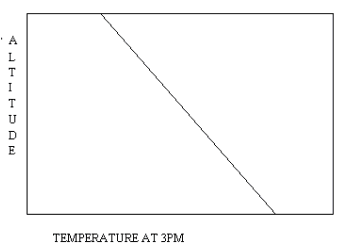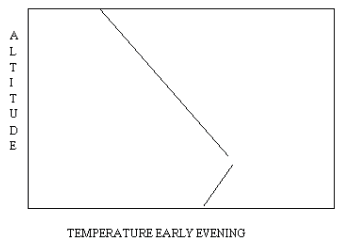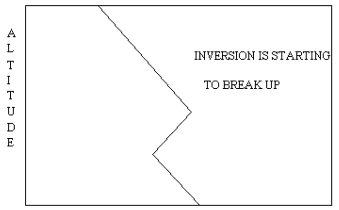| Radiation Inversions |
|
On a clear cool night the earth cools so rapidly by radiative heat loss that the air close to the ground becomes cooled by loosing heat to the earth (by conduction). Thus a temperature gradient is set up in which, over perhaps a few hundred meters in extreme conditions, the temperature warms with altitude. At higher altitudes the influence of the cold earth is less significant and eventually the expansion of the rising air starts to dominate again. THUS: Radiation inversions occur close to the ground, mostly in winter. They are short-lived events but when they occur they can cause serious local effects. For instance they can lead to trapping of early morning rush hour exhaust fumes. Thankfully this cannot lead to photochemical problems during early daylight hours because of low light intensities but as the inversion breaks up the accumulated primary pollutants such as carbon monoxide and oxides of nitrogen can be brought to ground in a process known as fumigation. |
 |
 |
 |